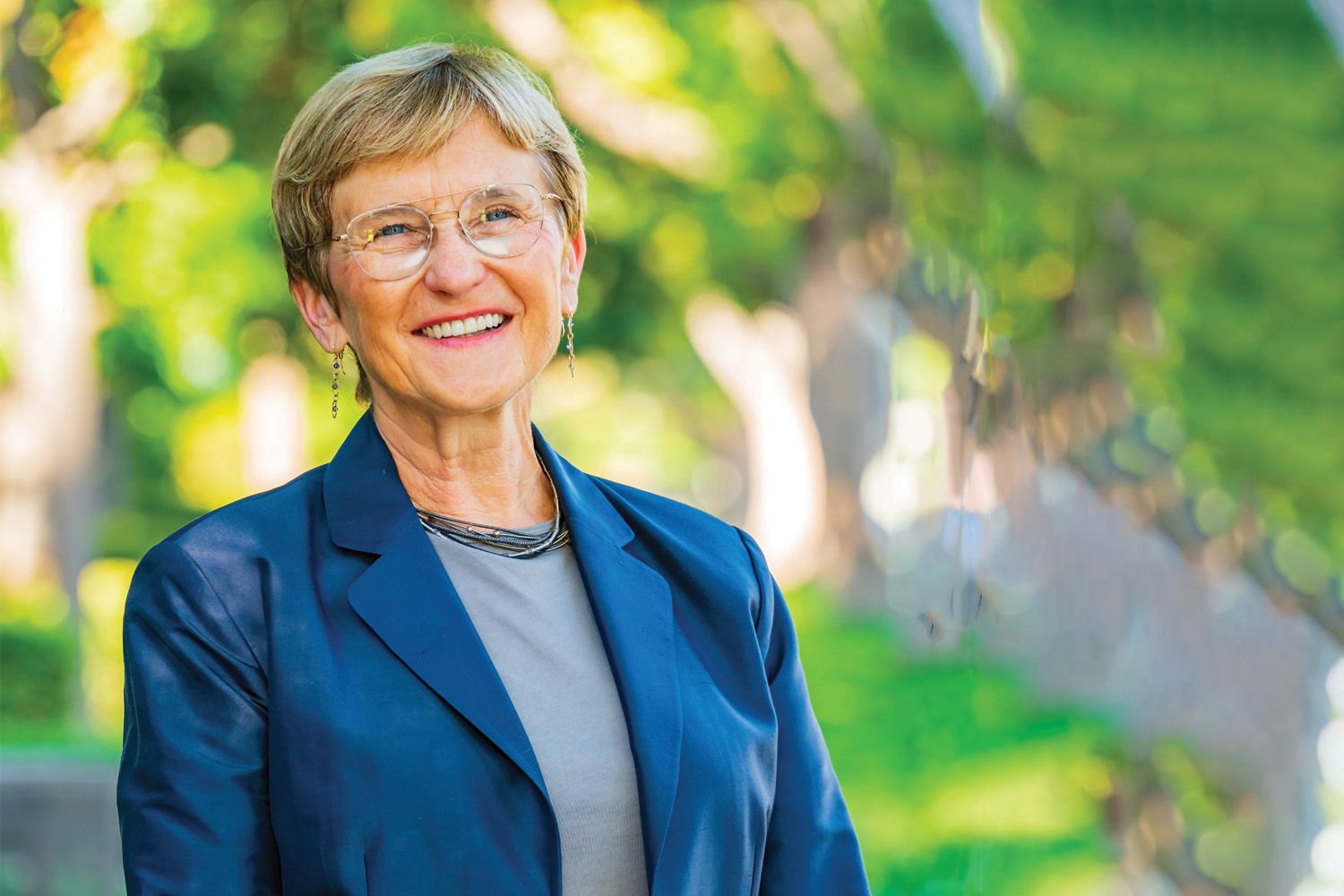02.15.2024
By uscbknpt
Kornelia Kulig Earns a 2024 Career in Excellence in Biomechanics Research Award

The award is meant to recognize an expert in biomechanics that has made an important scholarly contribution and impact on the physical therapy profession.
BY KATHARINE GAMMON
KORNELIA KULIG BEGAN HER RESEARCH CAREER in 1976 in Poland and got her doctoral degree in 1982. She originally studied sports biomechanics — how to coax athletes into performing faster, higher and stronger — but when she came to the United States after receiving her PhD, she worked with Jim Hay, founder of the American Society of Biomechanics as a postdoctoral scholar at the University of Iowa. From that work, she joined the physical therapy community. “Research was always part of my identity,” she says.
Kulig started working in rehab, and she joined the two fields — biomechanics and physical therapy —together. In the past 20 years, her research program studies people who have recurrent symptoms like low back pain or tendon pain that ripple through their lives through the year.
Her lab has studied these young folks experiencing pain and how pain can leave a footprint on how people move and use their bodies, even when the pain is absent. The aim, she says, is to “understand the phenomena but also down the road to assist in the development of new management procedures.”
Opening all the doors
Now, Kulig has been recognized with a 2024 Career in Excellence in Biomechanics Research Award at this year’s Combined Sections Meeting at the APTA Annual Exhibition, which took place February 15-17 in Boston. Kulig wasn’t in attendance, but Professor-Clinical Scholarship Lori Michener, who nominated her for the award, will be present in her place to collect the honor.
Receiving the award has been significant, Kulig says. “It’s very meaningful, especially from a group of colleagues who have the same passions and the same interests and have contributed to the same body of literature, with the intention of that knowledge being translated into education and into practice.”
USC has helped set her up for success, because the university is committed to research and education, she adds. “The university opens all the doors that are possible,” she adds, both through personal resources — having colleagues that contribute to the thinking and the doing — as well as the laboratory resources that help researchers do the best possible work.
Kulig plans to continue with her studies of orthopedic conditions with recurring symptoms. She’s passionate about translating the applications of her work to international contexts, including Europe and Asia.
She’s also researching the biomechanics of dancers — one recent publication assessed the energetic distribution during ballet jumps in healthy dancers. Studying dancers allows her to research their technique of performing certain dance specific tasks, but dancers also commonly have lower extremity tendon pain. It also taps into the “beauty of expression of human emotion,” Kulig says.

